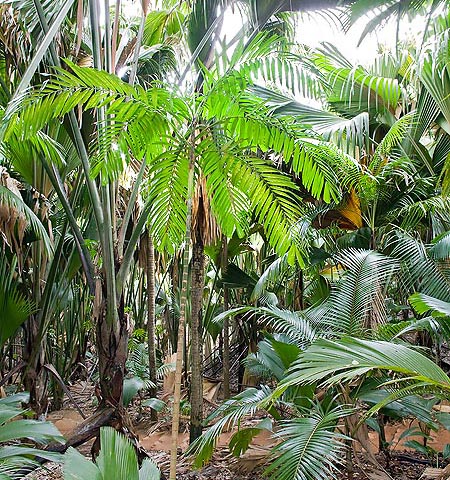Family : Arecaceae

Text © Pietro Puccio

English translation by Mario Beltramini

Endemic of the Seychelles, it can be 10 m tall © Giuseppe Mazza
The name of the genus comes from the combination of the Greek words “nephros” = kidney ans “sperma” = semen, with reference to the shape of the seeds. The species is honoured to the great Belgian horticulturist Louis Benoit van Houtte (1810-1876).
It is usually known as “latanier milpat”, “latanier millepattes”; in the English-speaking countries, as “Van Houtten’s palm”.
Palm with a single stem, can reach a height of 10 m, with a diameter of about 18 cm.
The leaves are about two metres long, pinnate, with dark green hanging leaflets, of variable width and length up to about 80 cm.
The base of the petiole, greyish, is equipped with thorns.
The inflorescence, which develops between the leaves, is 3, and more, metres long, with spikes of about 80 cm, carrying flowers of both sexes.
Fruits globose, reddish, of 15 mm of diameter. The seeds germinate in 4-5 weeks with bottom heat. The plant is cultivable with success only in wet tropical climate areas, both in full sun and in partial shade.
Synonyms: Oncosperma van-houtteanum H.Wendl.ex Van Houtte 1798 (1868); Areca nobilis auct. (1868).
→ For general notions about ARECACEAE please click here.
